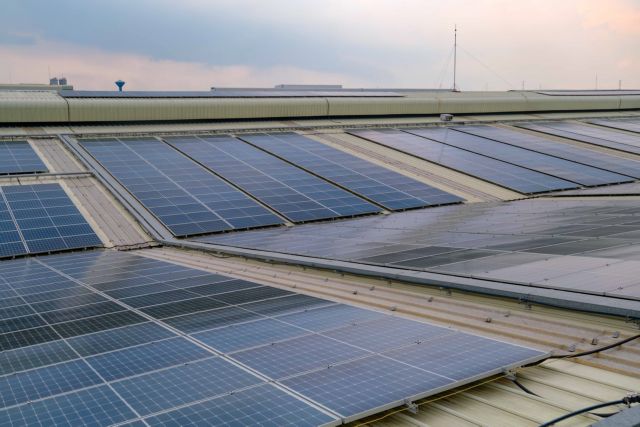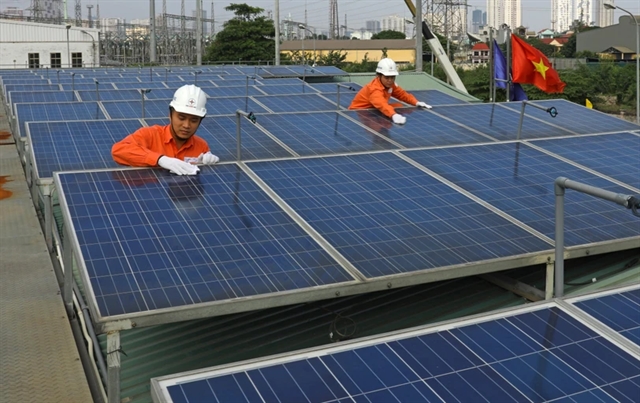 Economy
Economy

 |
| EVN workers install solar panels on top of a factory in Hoàng Mai District, Hà Nội. VNA/VNS Photo |
HÀ NỘI - The environmental and verification criteria for projects eligible for green credit and issuing bonds must follow a top-down approach while building on feedback from grassroots experience, said Deputy Prime Minister Trần Hồng Hà at a government meeting on Monday in Hà Nội.
The deputy PM stressed the importance of aligning with international standards to ensure competitiveness and market access for Vietnamese goods globally.
“We must identify priority sectors, define key criteria, and establish simple, clear, and measurable procedures for project verification and certification,” Hà said.
He said the green financial market aimed to tackle environmental pollution while promoting green transformation and the transition to a circular economy. It would enhance the competitiveness and integration of Vietnamese goods in international markets, while also preventing environmentally unfriendly projects.
Deputy PM Hà said the environmental standards might include projects already in operation but were transitioning to cleaner, greener technologies. State agencies and organisations should be allowed to assess environmental impact reports upon request by project developers, especially when technical standards exceed existing thresholds. He recommended referencing technical requirements from major export markets and more developed economies.
He assigned the Ministry of Agriculture and Environment to coordinate with other ministries and agencies to review and define priority areas and project types, avoiding overlaps and ensuring clear classification. The verification process must clarify the responsibilities of independent certifying bodies. A database of certified green projects should be developed, made publicly available, and regularly updated and integrated with other systems.
The new set of criteria will apply to investment project owners seeking green credit, entities issuing green bonds, credit institutions, foreign bank branches in Việt Nam, and relevant agencies.
There are 45 types of investment projects across seven sectors expected to be eligible for green credit and green bonds. These sectors include: energy; transport; construction; water resources; agriculture, forestry, fisheries and biodiversity conservation; manufacturing and processing industries; and environmental services.
Verification of projects meeting environmental criteria will be based on an agreement between the project owner or bond issuer and an independent verification body, following specific procedures, timelines and requirements. They outline the responsibilities of independent verification organisations, project owners, and green bond issuers. It covers inspection, monitoring and violation handling, as well as business requirements for independent verification service providers.
Speaking at the meeting, Minister of Agriculture and Environment Đỗ Đức Duy said the criteria aimed to concretise provisions in the Law on Environmental Protection concerning green credit and green bonds for environmentally beneficial projects. It would also supplement criteria for green production projects to meet the demands of export markets.
They would certify an investment project as "green", as well as the procedures for appraisal, assessment, and certification issuance. These criteria were informed by domestic and international green standards currently used by financial institutions to issue green credit.
According to the ministry, under international practices, independent organisations operating in the field of conformity certification and auditing are authorised to assess and issue green project certificates. Such certification is considered a prerequisite for project owners to access green credit, enjoy incentives (if available), or facilitate green bond issuance. It also enhances the project's ability to enter export markets with strict environmental and sustainability standards.
At the meeting, leaders from the Ministry of Finance, Ministry of Justice, and other participants discussed requirements that independent verification bodies must be registered or have branches operating in Việt Nam.
They also addressed the scope of application, mechanisms for updating eligible project types, and technical standards. Participants emphasised the need for clarity in verification procedures and documentation, as well as clear accountability for independent certifying bodies. VNS




